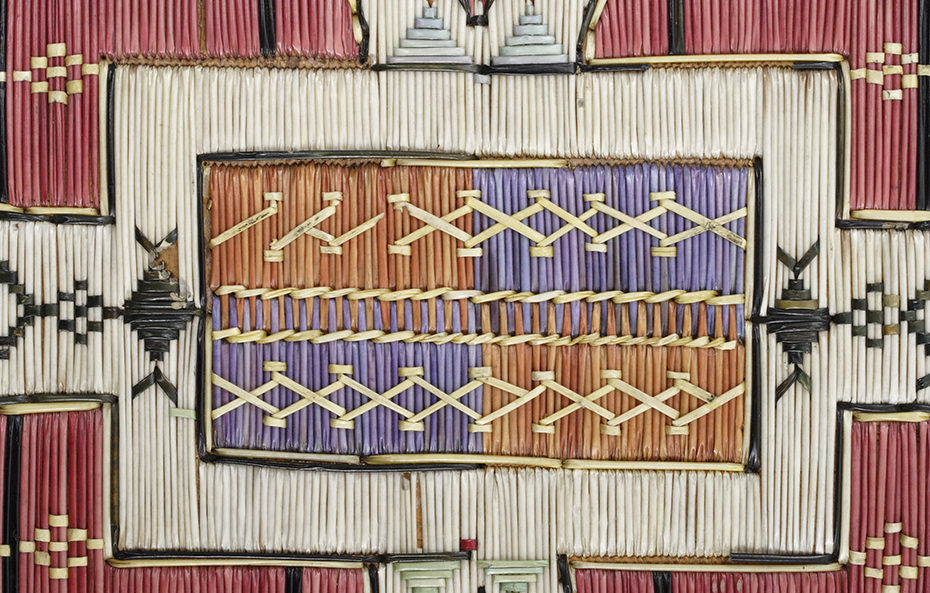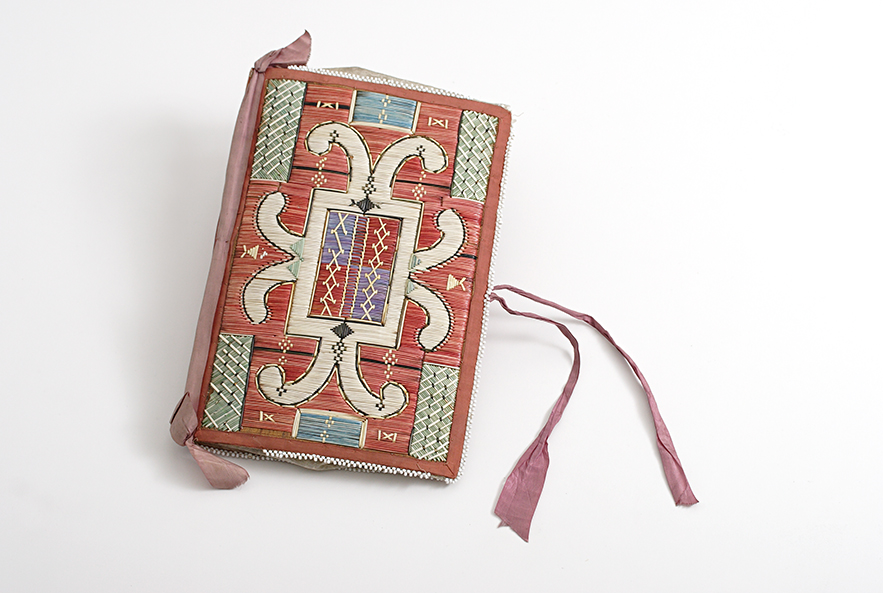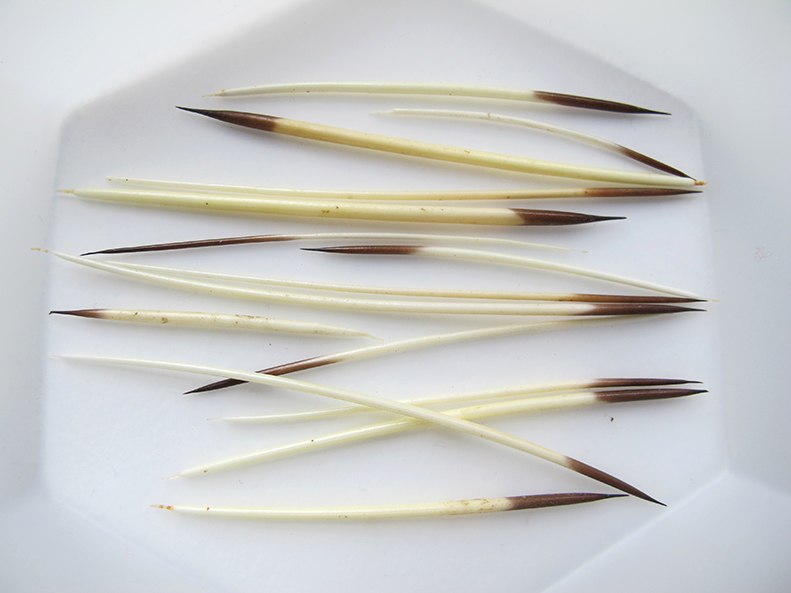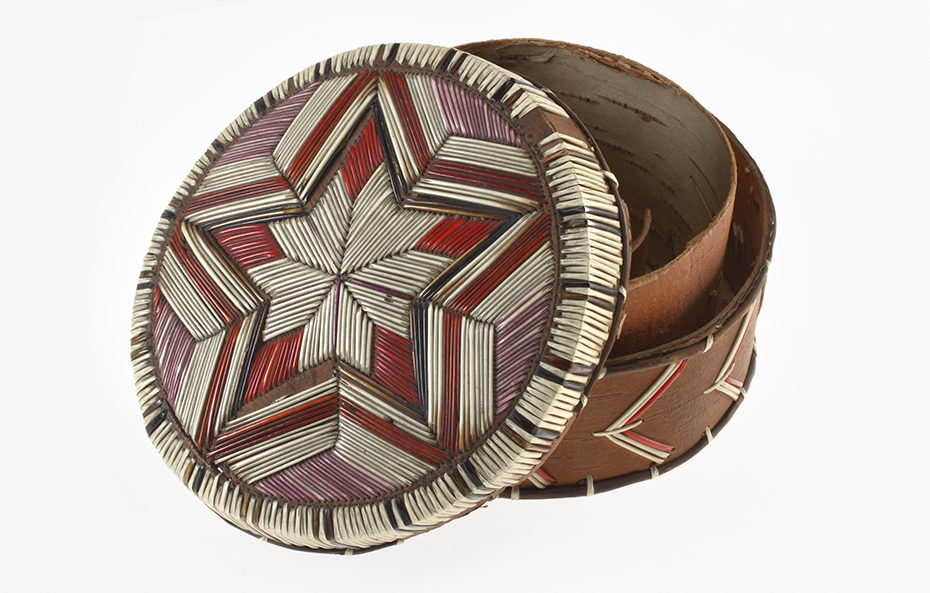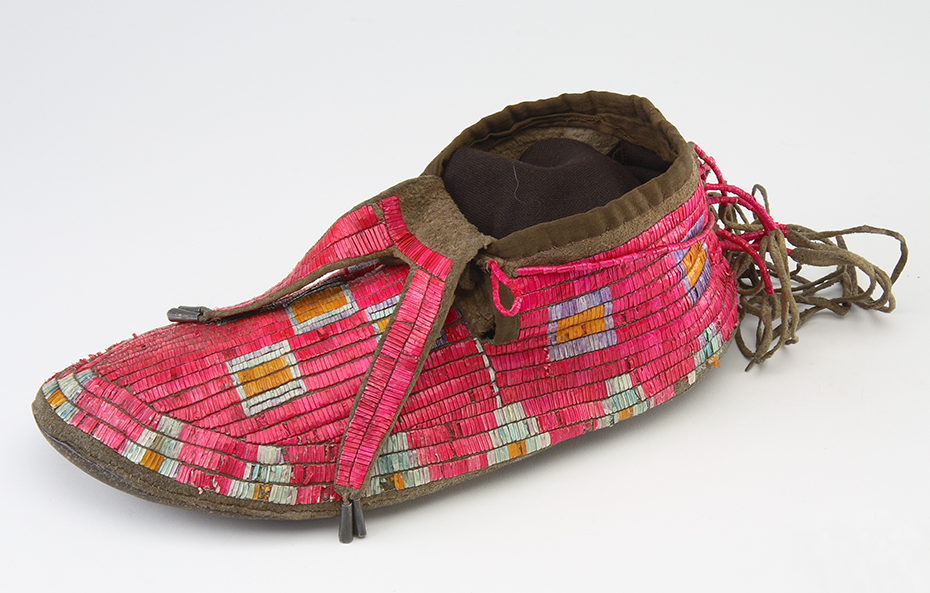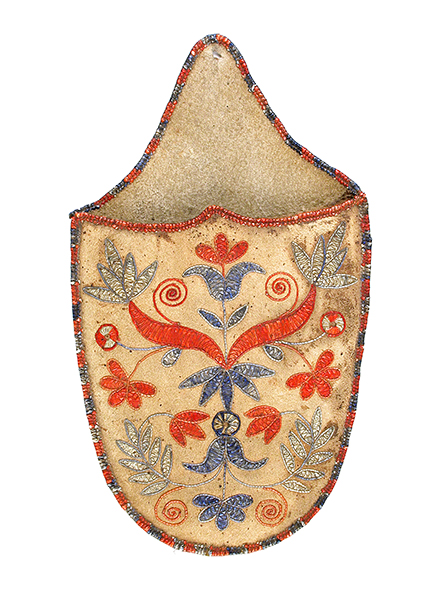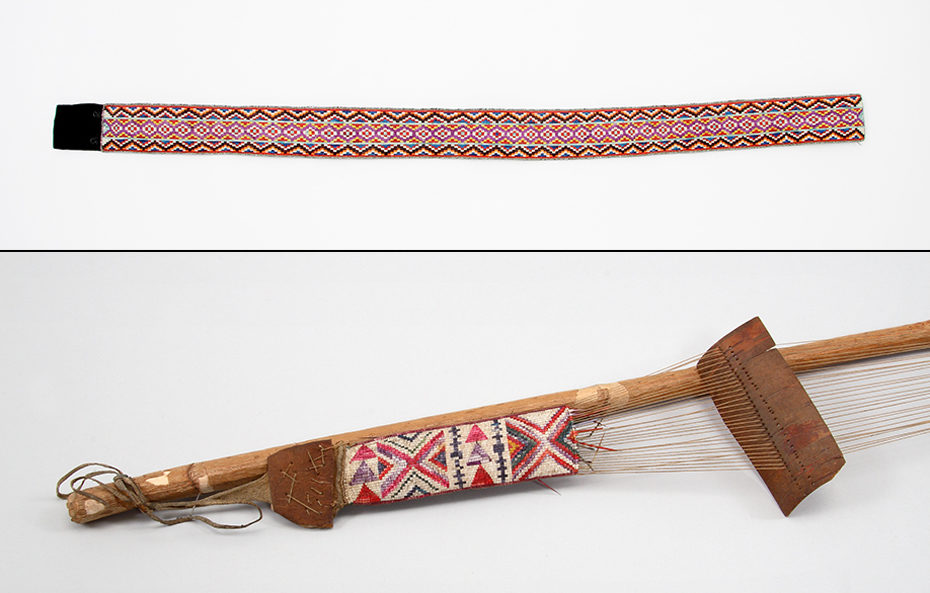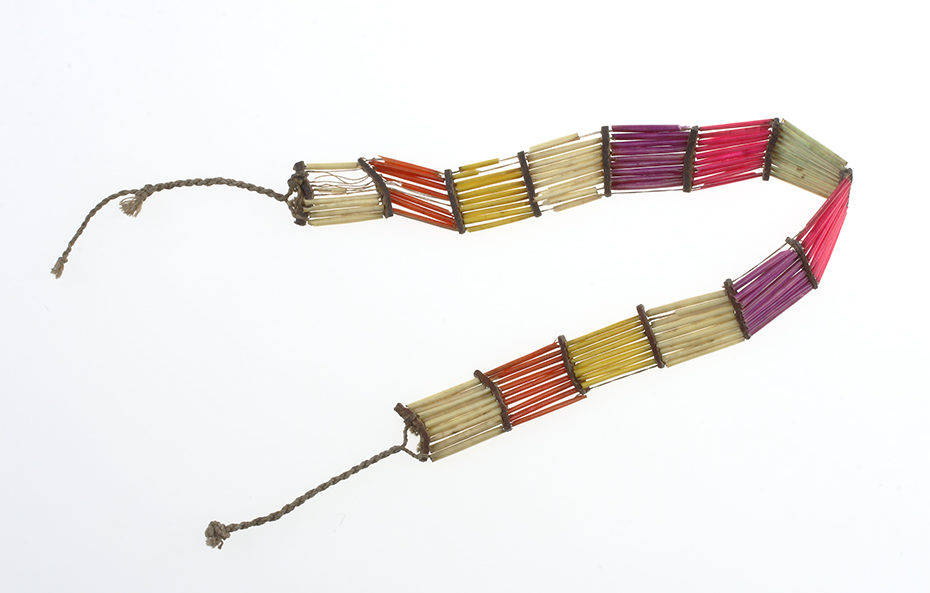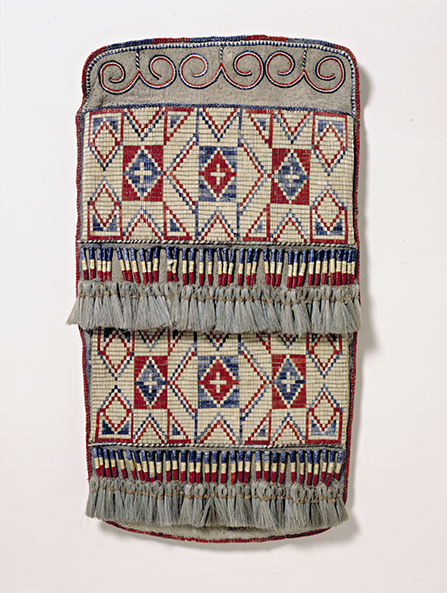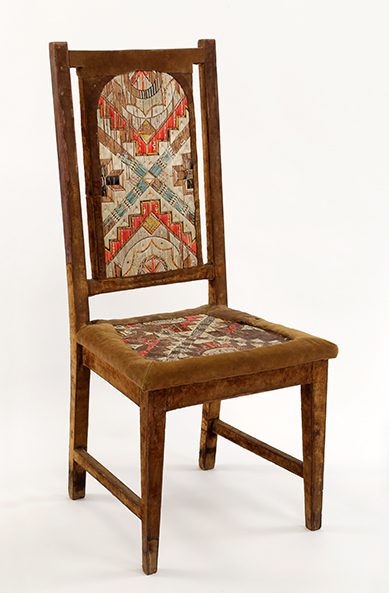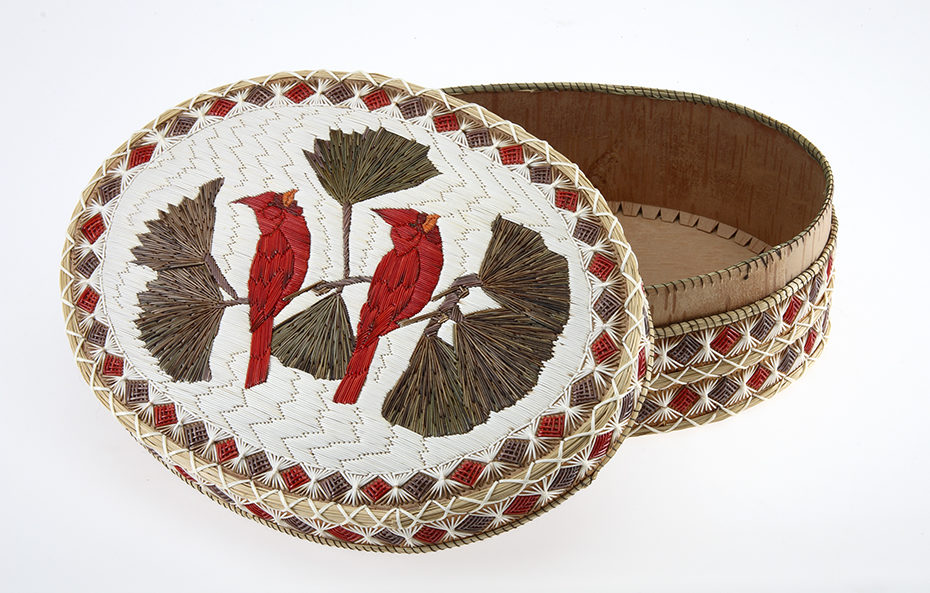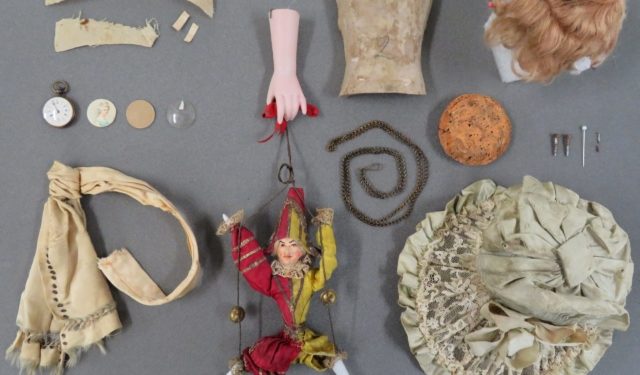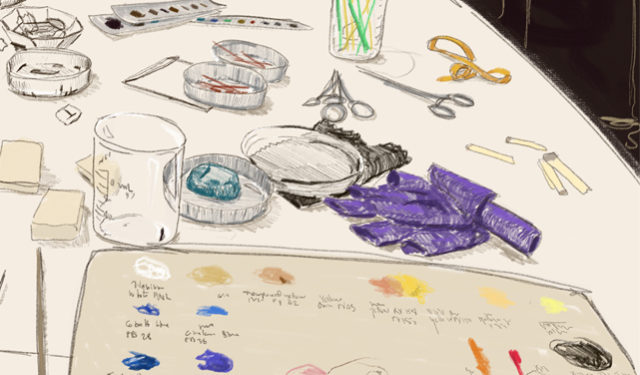Pique your interest with porcupine quills
Learn how the Indigenous peoples of North America mastered the art of quillwork.
May 26, 2022
Porcupine quill embroidery, or quillwork, is the art of decorating hide, bark, or cloth with dyed porcupine quills. The art form is special in that it is unique to the Indigenous peoples of North America.
Quillwork is an ancient, pre-contact art form. It was, however, influenced by contact with Europeans. In the 18th and 19th centuries, quillwork insertion on birchbark developed in response to European tastes. Quillwork souvenirs like birchbark boxes, seat backs, and other items became popular trade objects. In the mid 19th century, porcupine quills were supplanted by small glass trade beads for embroidery work as beads were easier and faster to use.
Quillwork is typically practised by women and can have spiritual significance, as in the Mi’kmaq and Blackfoot cultures. The Mi’kmaq are even called “the porcupine people” because of their affinity for quillwork.
Natural porcupine quills are skilfully transformed into colourful, geometric designs through a variety of techniques to decorate objects like moccasins, clothing, regalia, baskets, and more.
The North American porcupine (Erethizon dorsatum) has about 30,000 quills on its body as a defense mechanism. The quills are actually specialized hairs, made of the protein keratin like our own hair. Ranging in length from 1 to 15 cm, they have a whitish colour and dark tip.
Though the surface appears smooth and glossy to the naked eye, it is actually comprised of tiny scales with microscopic barbs, making quills difficult to remove if embedded. Quills are lightweight, flexible, and resilient.
Quills can be harvested from live or dead animals. Before they can be used, they must be washed to remove natural oils and dried. Quills may be coloured with homemade natural dyes or commercial synthetic dyes. Examples of natural dyes include indigo and larkspur for blue, lichen and sunflower for yellow, and berries and bloodroot for red colours.
There are several different quillwork techniques: quills can be inserted, sewn, wrapped, or woven to different substrates. In most techniques, the quills are moistened with water or saliva to temporarily soften them so they are pliable enough for working. They re-harden when dry. Quills can be left in their natural cylindrical shape, or flattened by cutting the tips and pressing them to remove the air inside.
Bark insertion technique
Quills are inserted into holes made in birchbark with an awl. The ends are folded to the back of the work. The materials are worked when wet and then stiffen as they dry to hold themselves in place, often without any additional fastening. This technique is commonly used on containers or furniture inserts.
Embroidery or sewing technique
Quills, flattened and moistened to become pliable, are sewn onto hide with sinew or thread. The stitching holds down the end of the quill, which is then folded back and forth over subsequent stitches so only the quill is visible from the front side. There are many stitch types: zigzag, single line, parallel band, sawtooth, plaiting, and more. This technique is versatile and can produce a variety of designs, from delicate lines to solid fields of colour, as demonstrated by these two objects.
Loom weaving technique
Working on a bow loom strung with sinew or thread, moistened quills are inserted as supplemental warp elements into the weaving, then held in place by weft yarns passing over and under the quill and warp yarns. This creates a patterned, narrow woven band, often used for belts.
Others techniques
Dyed and flattened quills can be wrapped around hide strips like fringe on clothing or other substrates. Quills can also be simply cut and strung on thread as beads.
All techniques can create colourful, complex, often geometric designs with symbolic meanings. Well-executed quillwork shows only evenly spaced, smooth, glossy quills on the front side, with the stitching and dark quill tips hidden on the underside of the work. It requires great dexterity, patience, and skill.
Today, some artists are reviving the traditional practice of quillwork.
BIBLIOGRAPHY
Cole, Christina and Susan Heald. “The History and Analysis of Pre-Aniline Native American Quillwork Dyes.” Textile Society of America Symposium Proceedings Paper 14 (2010).
Gadacz, René R. “Quillwork.” The Canadian Encyclopedia. Historica Canada. Article published February 7, 2006; last edited April 24, 2020.
https://www.thecanadianencyclopedia.ca/en/article/quillwork
Orchard, William C. The Technique of Porcupine-Quill Decoration among the Indians of North America, 2nd edition. New York: Museum of the American Indian Heye Foundation, 1971.
Prindle, Tara. “Porcupine quillwork and hair.” Native Tech: Native American Technology and Art. Accessed Jan. 3, 2022. http://www.nativetech.org/quill/index.php

